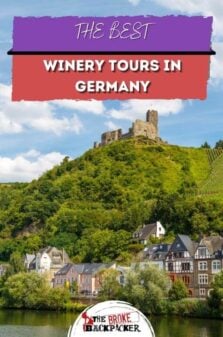Germany has a long history of wine production that dates back more than 2,000 years, with a current production of a whopping 9.4 million hectoliters. It was all thanks to a Roman invasion that the country started producing wine and now firmly takes its place as Europe’s 4th largest wine producer.
Riesling rules supreme in Germany and the country is home to the largest plantings of it in the world – and boy are they good! It’s easy to see why oenophiles flock to the country every year to taste some of the world’s best renditions of the varietal. Wine tourism is ever-growing as Germany continues to strive towards vino-fection (vino perfection, in case you were wondering).
Where do I fit into all of this? Glad you asked! I’ve gone on some of the best winery tours in Germany, for your convenience, and really put my firsthand experience of German wines to good use. You’ll find that these tours are run by experienced locals who know what they’re talking about. They’re both fun and informative and the perfect way to learn all about the wine region at hand.
Right, let’s get cracking!
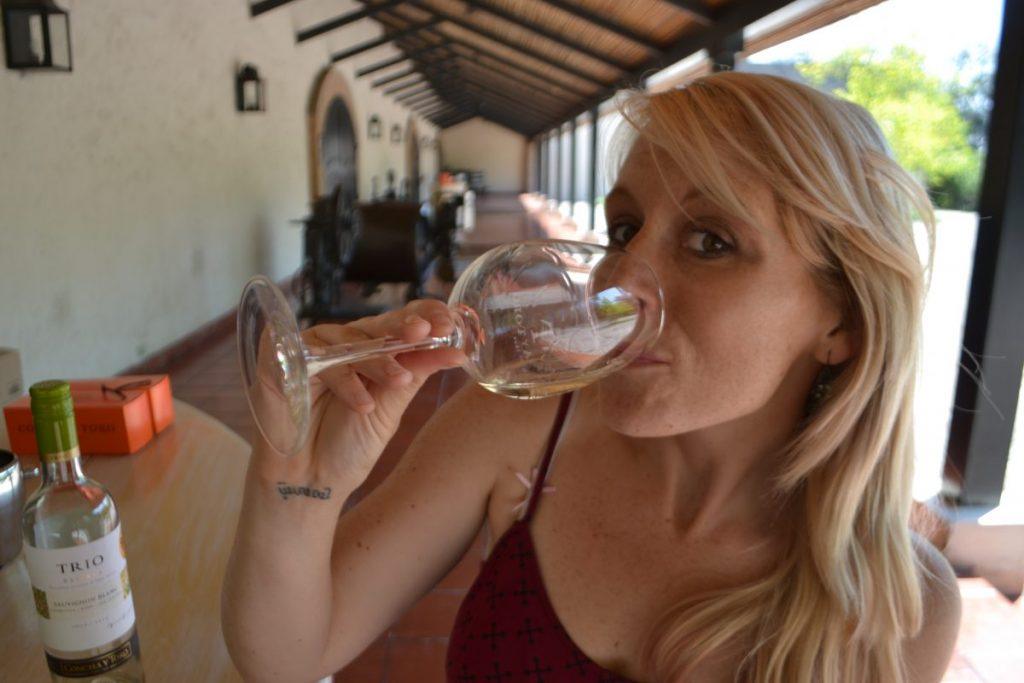
What is a Vineyard Tour?
You’ve probably heard the term “vineyard tour” before but might not know exactly what it is. So, before we get down to the wine regions you can see while traveling in Germany, let me clarify first. Essentially, a vineyard tour takes you into the heart of the wine-producing region for a full day of learning about and tasting wines.
Many people think that it’s simply a trot through the vineyards while you receive a lecture in viticulture and oenology. While that forms a part of the day, it’s a lot less formal and heaps of fun! The tour is usually action-packed, with one or more vineyard visits included.
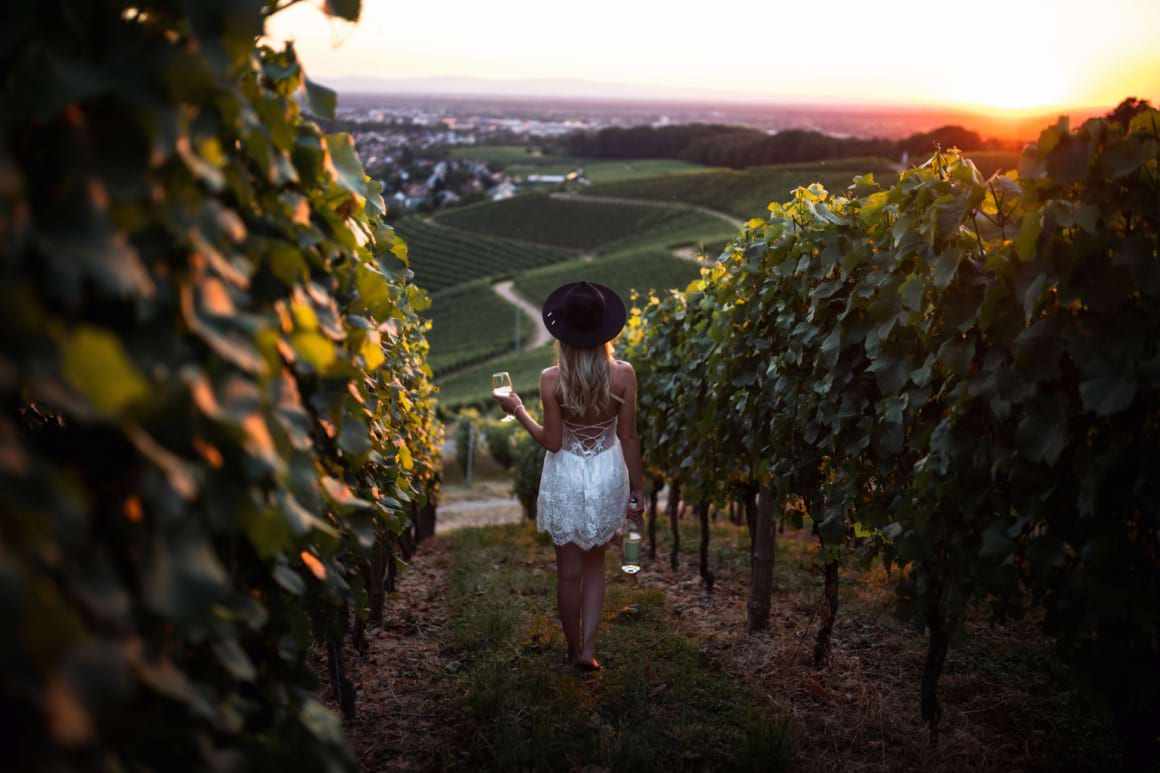
You will learn about everything from grape varietals to harvesting, production techniques, cellar practices, barrel ageing, and bottling. The cherry on the cake, or die Kirsche auf dem kuchen as the Germans would say, is getting to taste and drink delicious wines.
That’s why you’re here, right? There’s also usually a lunch involved as you discover the region and its wines with like-minded individuals. While Germany isn’t the cheapest place in the world to experience a wine tour, I think you’ll be pleasantly surprised with what you get to try!

Our GREATEST Travel Secrets…
Pop your email here & get the original Broke Backpacker Bible for FREE.
Wine Regions of Germany
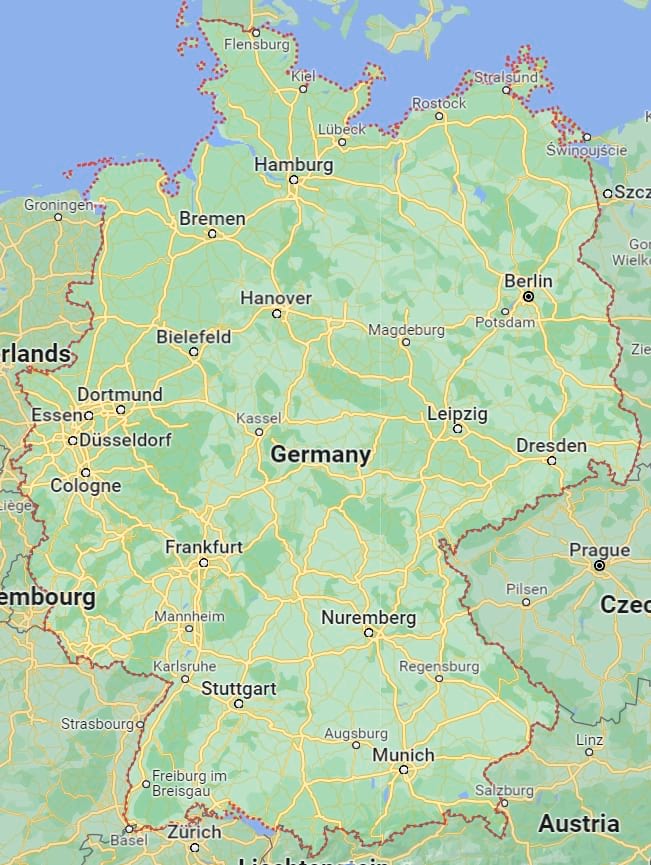
Right, now that we’ve gotten that out the way, it’s time to get serious. While many travelers to the country are focused on backpacking Berlin, Germany is blessed with 13 distinct wine-growing regions, with the majority located to the west. Each region has its own specialty, but one thing’s for sure – no matter where you are, there’ll always be a great German vineyard nearby.
While the vineyards are usually located outside of the major cities, they make for a great countryside escape.
Let’s take a closer look at some of the top wine regions in Germany:
Rheinhessen
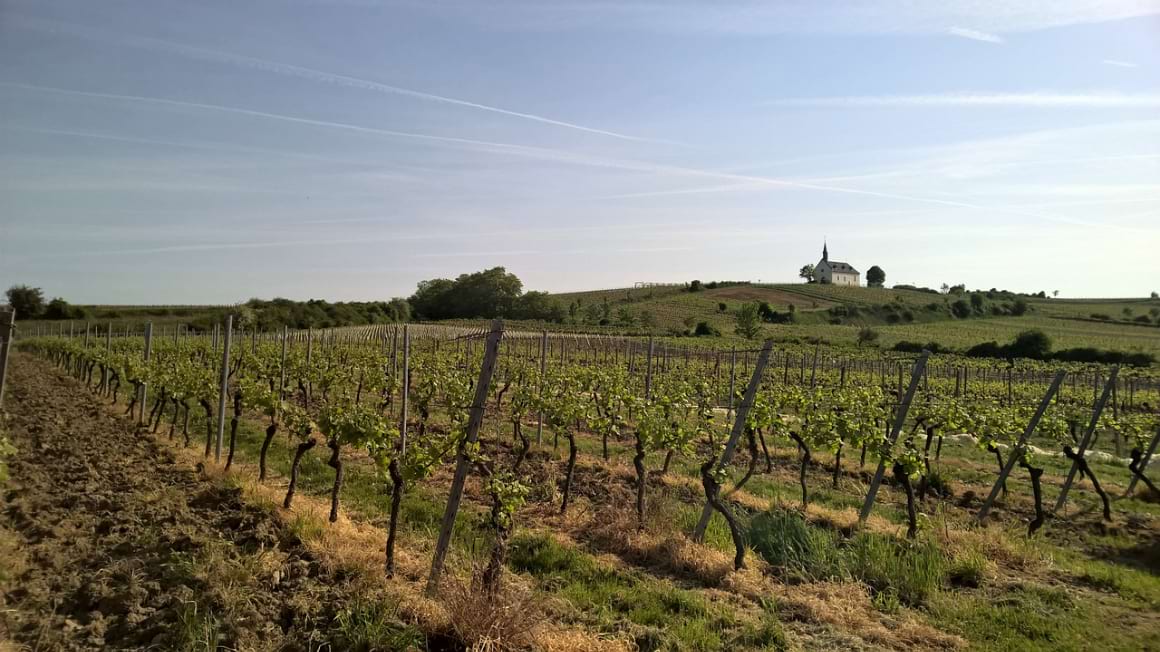
First up is Rheinhessen, one of Germany’s largest, and often over-looked wine regions. Located in the southwest, close to Frankfurt, the most favorable areas within the region are found along the Rhine River, a well-known name in the wine world. Nestled in an area south of Rheingau, east of Nahe, and north of the Pfalz, Rheinhessen is a predominantly white wine-producing area, making up around 72% of the total production.
Historically, Müller-Thurgau was the region’s most planted varietal, but now the king of German varietals, Riesling, has overtaken it. On the red side, Dornfelder is most widely planted and occupies around 13% of the total crop. Other varietals that are found within the area include Grauburgunder (Pinot Gris), Spätburgunder (Pinot Noir), Silvaner, Scheurebe, and Liebfraumilch.
The most favorable parts of Rheinhessen for wine are those near the Rhine River. The river reflects sunlight and moderates temperature, while the valleys trap heat. There are a variety of soils and climatic conditions in the region, but the surrounding mountains provide shelter and result in a milder climate as well as longer hangtime.
Pfalz
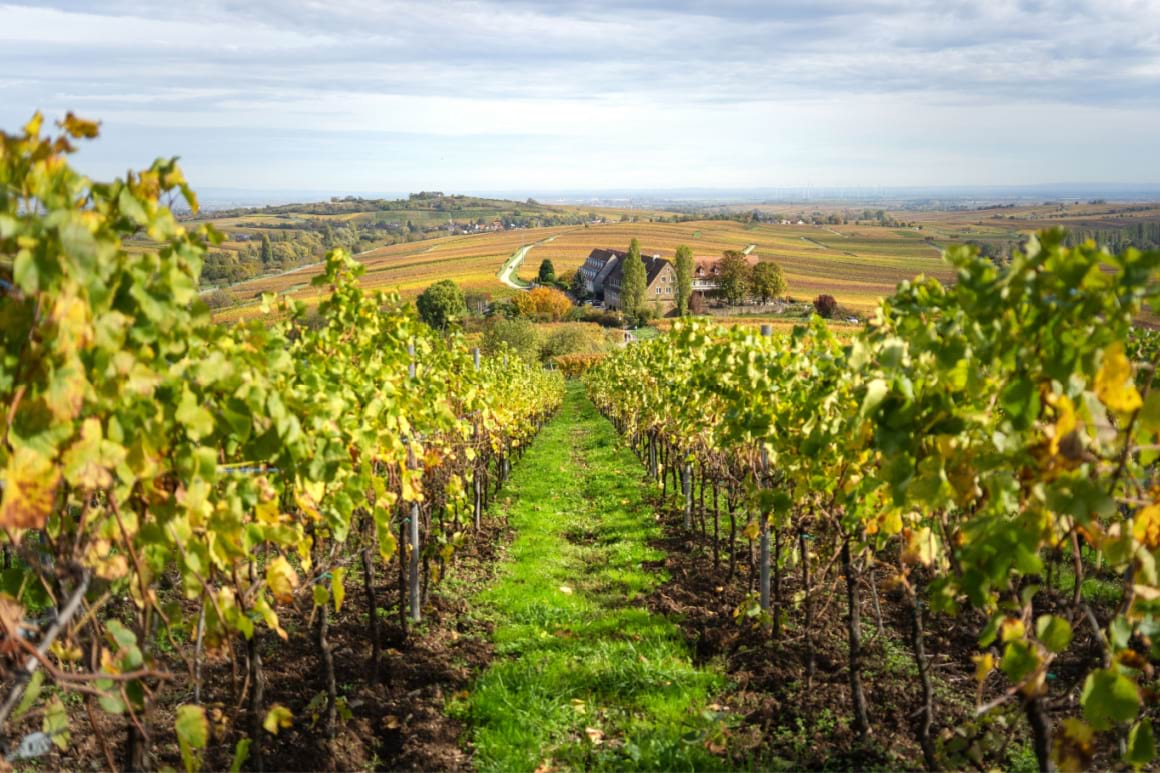
Pfalz, found in southwest Germany, is wedged between Rheinhessen and the French wine region of Alsace. It is one of the country’s key wine-producing regions, producing large portions of high-quality Riesling and Spätburgunder (Pinot Noir).
It is the second largest wine region in Germany, split between 40% red wine production and 60% white wine production. Due to Germany’s varied climate, you should plan your visit for summer.
After Riesling, the second most popular grape varietal in the region is Dornfelder, a red varietal that was hybridized in the mid-1950s. This is then followed by Müller-Thurgau, Portugieser, and Spätburgunder (Pinot Noir), with the latter becoming one of the region’s most famous wines.
The Pflaz experiences a warm, dry climate which is largely attributed to the influence of the Haardt Mountains. Much like the Vosges in the Alsace, the mountains rise to an elevation just shy of 700m, casting a rain shadow over the region.
Baden
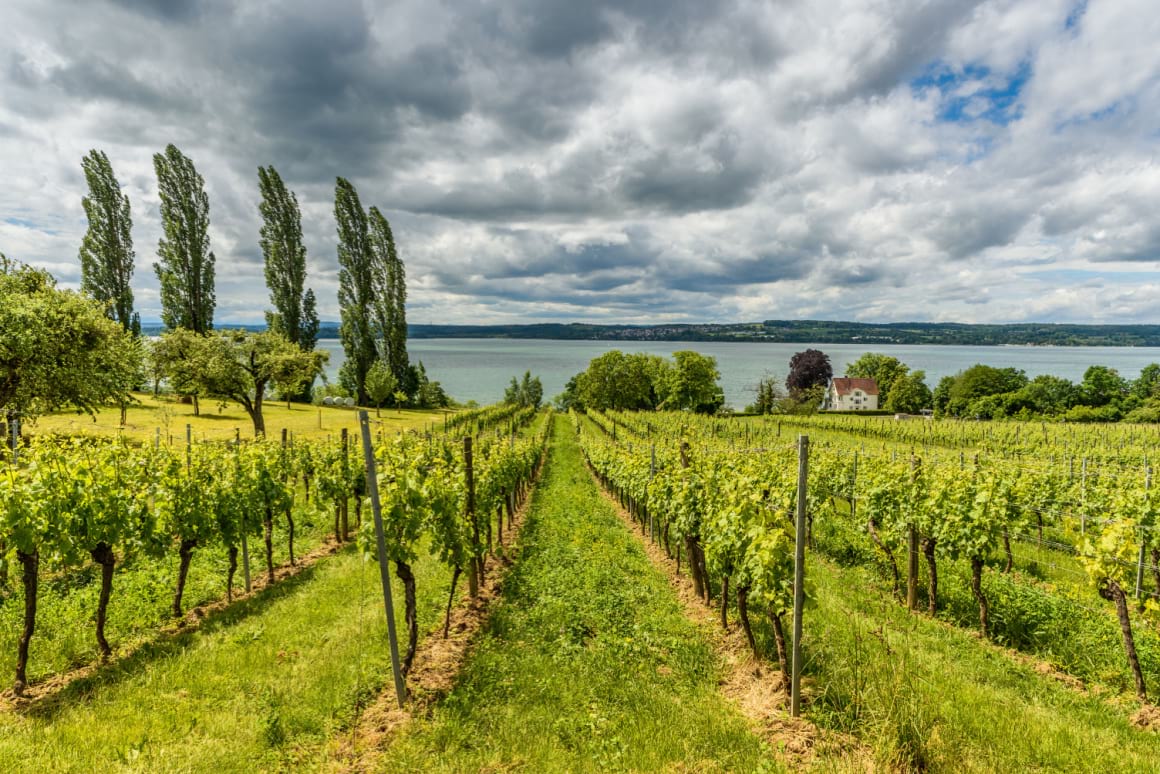
Located in the south of Germany, Baden follows the Rhine River along the French border to the west and the Swiss border to the south. While it boasts a variety of terroir, it is by far the warmest, with an overall sunny and dry climate.
The region is best known for its red wine production, which is quite uncommon in Germany. There are some great Spätburgunders (Pinot Noir) produced in Baden, while both Grauburgunder (Pinot Gris) and Weissburgunder (Pinot Blanc) are produced in a much more full-bodied style, and are usually oaked. There are also good quantities of both Riesling and Müller-Thurgau planted in Baden.
You see a large variety in the soils found in the Baden region ranging from clay, limestone, and sand to keuper, loam, loess, and even granite. The Kaiserstuhl also has much darker volcanic soils, while the Bodensee is subject to more glacial deposits that are high in minerals.
Wurttemberg
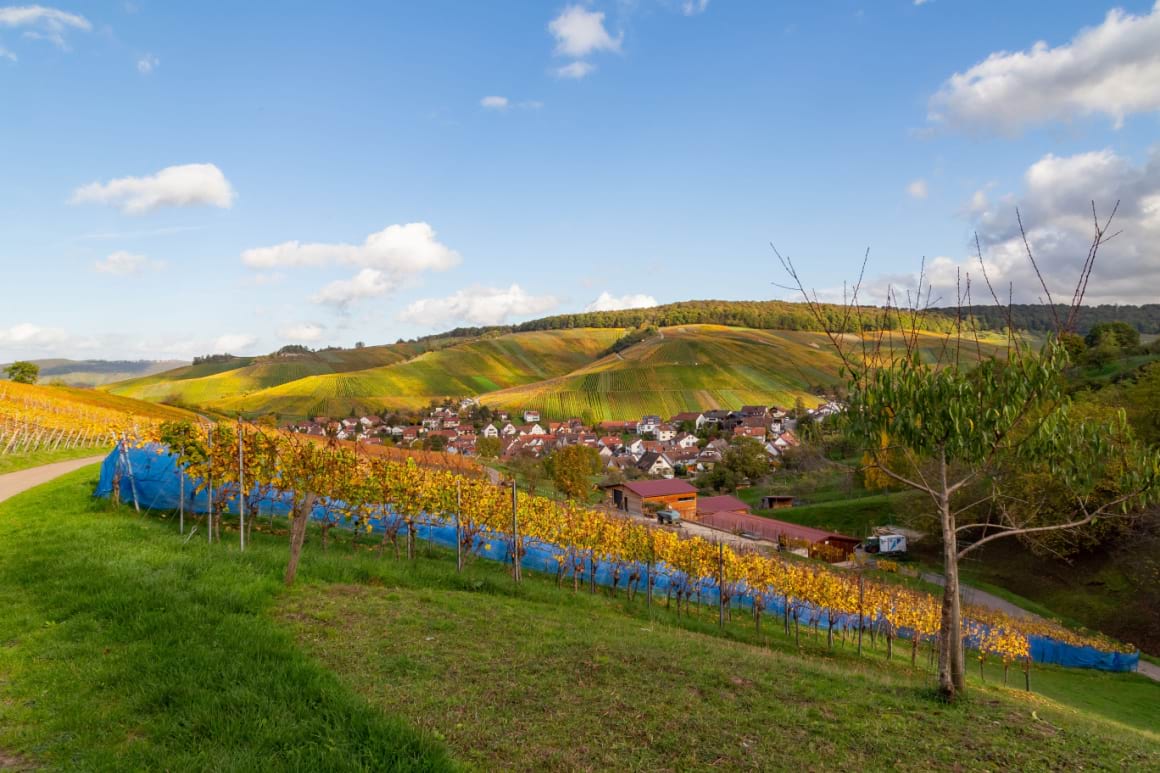
Wurttemberg, a notoriously rural and hilly area, is known as Germany’s premium red wine-producing region. Found to the north of Stuttgart, the region has around 70% red production, made predominantly from the Lemberger, Trollinger, and Schwarzriesling varietals. Wurttemberg is generally a cooler region, resulting in lighter, more fruit-driven red wines with lower alcohols.
Riesling dominates the white wines in the region at around two-thirds of total production, while Kerner and Müller-Thurgau make up the remaining third. The Neckar River is considered to be the main viticultural area of Wurttemberg, along with other smaller tributary valleys such as Kocher, Jagst, Rems, Enz, and Tauber.
Interestingly enough, there is very little wine from Wurttemberg that is exported as the demand from the local market is so high. Their claim to fame is that they have the highest wine consumption in the entire country – sounds like my kind of place!
Mosel
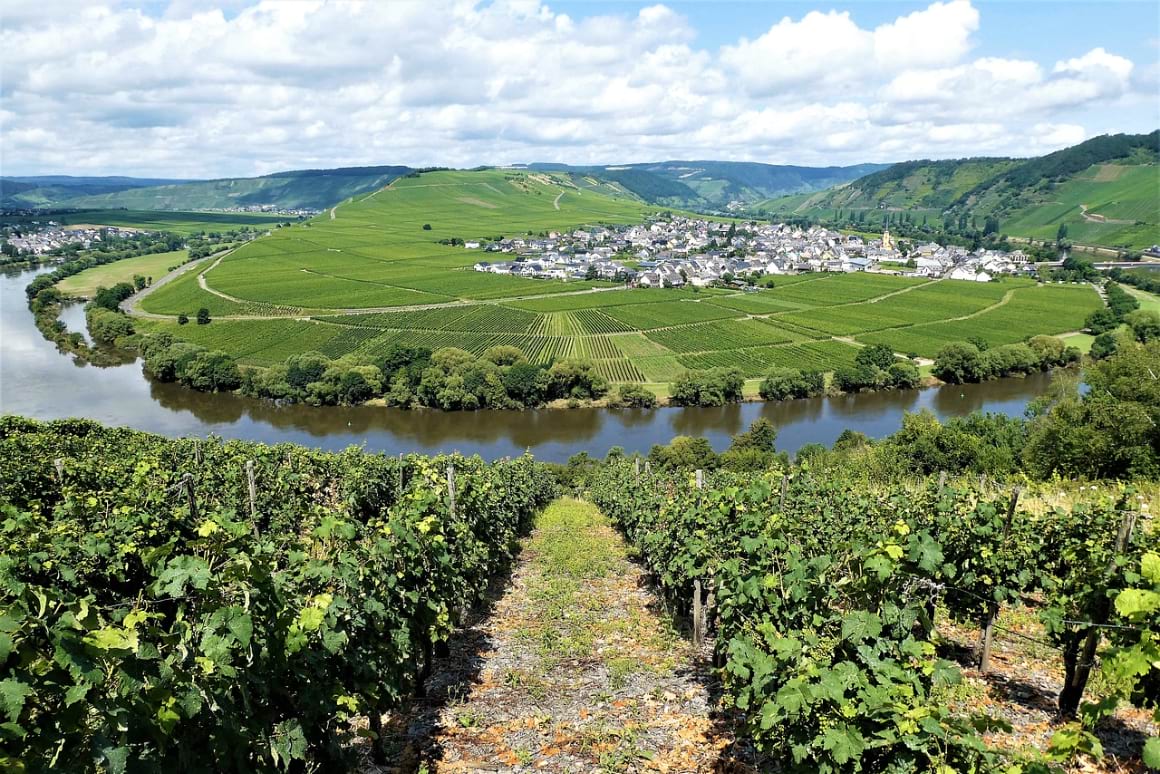
Lastly, the famous and arguably one of the most stunning places in Germany, is the Mosel, following the course of the Mosel River. Many consider it to be the spiritual home of Riesling, although the Alsatians may disagree strongly! As you may have guessed, Riesling rules supreme in the Mosel, making up more than 60% of all plantings that are produced in several different styles.
One thing remains constant – they are some of the best in the world. The operative word to describe them is “balanced”, hitting the sweet spot between low alcohol, acidity, and sweetness. Other varietals planted in the Mosel, in order, are Müller-Thurgau, Elbling, Weissburgunder (Pinot Blanc), and Spätburgunders (Pinot Noir).
One of the most interesting attributes of the Mosel are the steep vineyards that protrude upwards from the river. Some over the slopes such as Bremmer Calmont, reach an incline of 68 degrees! This makes it impossible for machinery to access meaning that the majority of the harvest and vineyard work is done by hand.
Slate also washes down the slopes every year, and needs to be transported back up by hand. The wet, slippery conditions make for dangerous work and there have been known fatalities in the region.

We’ve tested countless backpacks over the years, but there’s one that has always been the best and remains the best buy for adventurers: the broke backpacker-approved Osprey Aether and Ariel series.
Want more deetz on why these packs are so damn perfect? Then read our comprehensive review for the inside scoop!
View on Osprey View on REIThe Best Germany Winery Tours
Now, one would think that beer rules supreme in Germany. But Germans like alcohol… so they love their wine too! There are around 3,000 wineries in Germany which is hellishly overwhelming for a local, let alone someone who is visiting for the first time!
There is some relief as not all of these wineries offer tours and tastings (phew!) but there are still tons to choose from. Luckily, I’ve done some digging and uncovered some of the top tours for each region. Some of them are in groups and some are private tours, but all are great nevertheless.
Let’s take a look at some of the top German wine tours right now, per region:
Rheinhessen Wine Tour
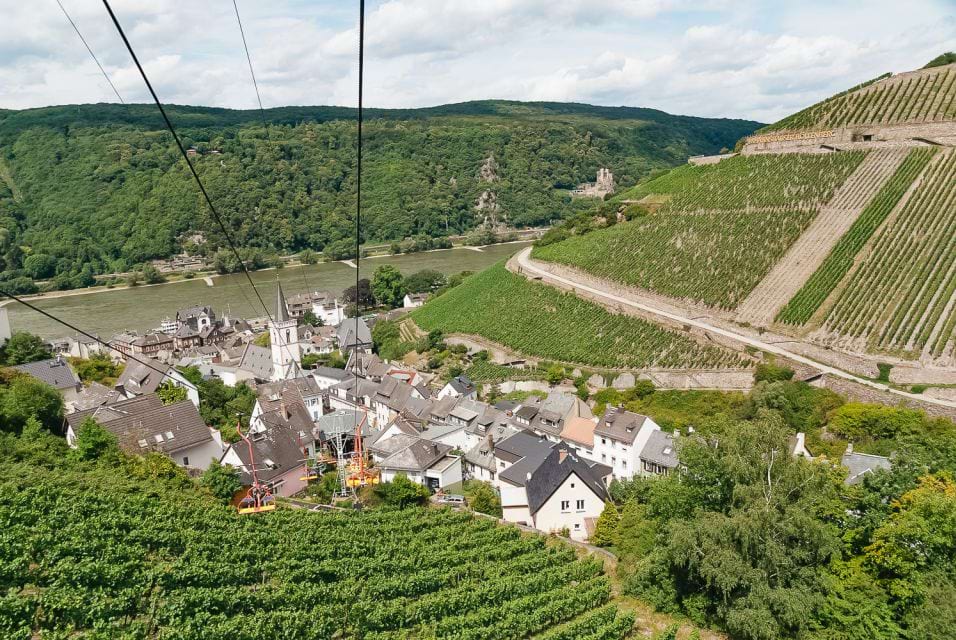
- Frankfurt
- 7 hours
- $158
Kicking off the Germany winery tours is a visit to the Rheinhessen region, starting in Frankfurt. This Rheinhessen wine tour is as much about culture as it is about wine. Your tour will drive to the towns of Rüdesheim am Rhein and Assmannshausen, followed by lunch. There is also a wine tasting in Assmannshausen. The tour then proceeds with a boat ride along the Rhine River to Sankt Goarshausen all while passing some of the famous vineyards in the region that litter the banks of the river.
If you visit during the wintertime, the boat operators might not be running due to adverse weather conditions. But fear not! Instead, you will get to see a local castle or “Schloss” as it is known in Germany. The tour then concludes by dropping you off back in the city of Frankfurt.
Pfalz Wine Tour
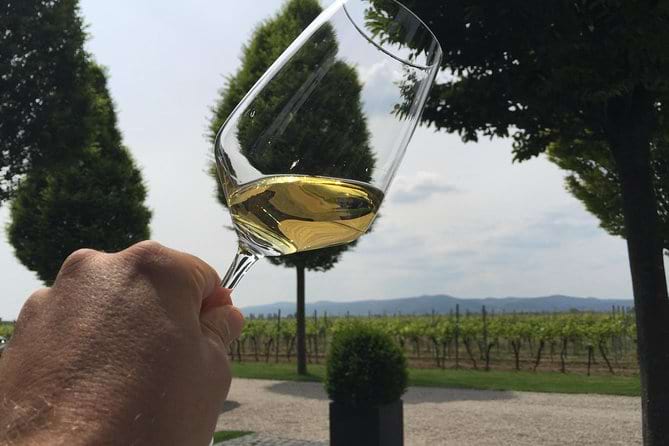
- Heidelberg
- 6 – 7 hours
- $392
Things are now starting to heat up with the winery tours in Germany. Next up is an iconic Pfalz wine tour that begins in none other than Heidelberg. The Pfalz, often referred to as “the Tuscany of Germany“, has some cracking red wine on offer and can be discovered during this vineyard visit.
During the tour, you’ll have peace of mind as you will be driven from winery to winery as you discover some of the best reds in the region. You will visit at least three wineries during the tour and taste upwards of 25 wines. That sounds like my kind of day out!
You will also be treated to unparalleled views of the vineyards as you do a pass-by on the Bergstrasse Wine Road. All the while, you will be educated and well looked after by your experienced guide. You will also get to discover and taste wines from smaller producers that are relatively unheard of – a real treat!
Baden Wine Tour
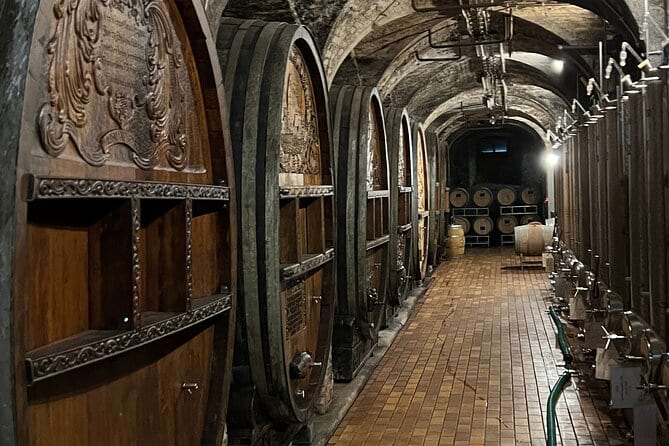
- Friedrichshafen
- 6.5 hours
- $192
Next up on the list is the Baden wine tour, taking guests on a visit to three or four different wineries on Lake Constance. The beauty of this winery tour is that it caters to all levels of wine enthusiasts, experienced or not. The idea is to have a fun day out, exploring and tasting delicious wines from the region, without the pretenses that are often associated with the drink.
This vineyards tour includes the tastings at the wineries as well as all transport and guiding for the day. The local guides have a great knowledge and understanding of the region and will be able to broaden your mind. While your tour might be made up of only you and your family or friends, you might also be paired with fellow oenophiles.
This is a great way to meet other like-minded individuals who also love wine and travel! After your tastings are done, you will be dropped back off near your accommodation.
Wurttemberg Wine Tour
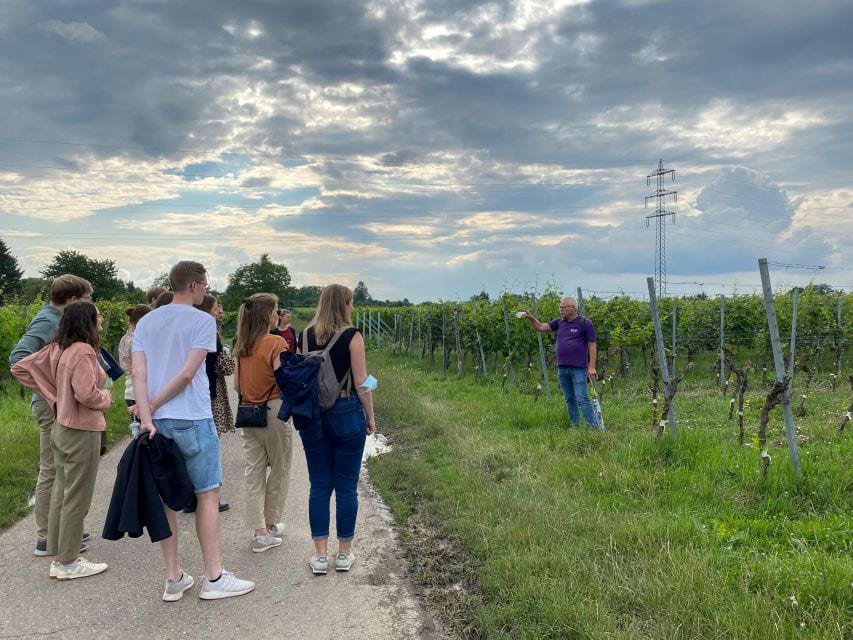
- Fellbach
- 3 hours
- $43
Starting off in Fellbach, this Wurttemberg wine tour takes you into the heart of the wine growing region for an express tour and tasting. The relatively unknown “Herzogenberg” is where the tour begins, where you’ll discover two of the region’s best wineries – Aldinger Winery and Hans Peter Wöhrwag Winery.
During the 2.5-hour tour, you’ll go hiking through the vineyards and be treated to picturesque views of the beautiful neighbourhoods of Stuttgart as well as the Mercedes Benz Arena and the burial chapel on the Württemberg. You’ll taste three wines from the two wineries and will also get to nibble on a traditional Swabian snack. This is the perfect vineyard visit for those who are slightly pressed for time and it makes for a great morning or afternoon activity.
Mosel Wine Tour
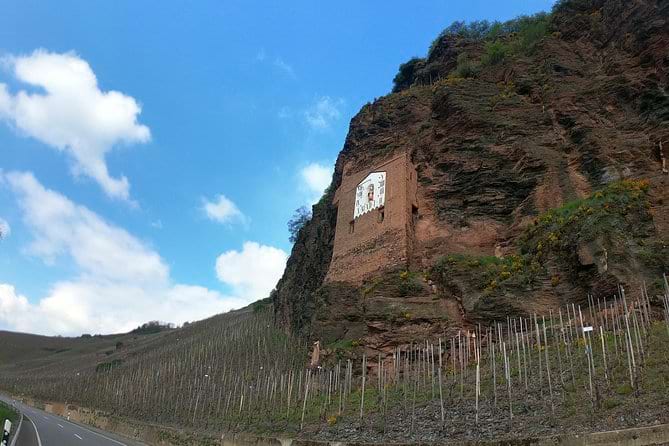
- Trier
- 6 – 10 hours
- $392
Last but not least on this list of winery tours in Germany is the Grape Escape Mosel – it’s time to discover the mighty Riesling in all its glory. You will get to experience some different styles, ranging from the bone-dry wines all the way through to the sweet late-harvest renditions – and everything in between. You’ll also learn about the steep slate vineyards that have contributed to the fine wines that the Mosel produces. The tour can either be private or shared, but one thing is for certain – you will have a fun, Riesling-fueled day.
The tour includes a pick-up and drop-off as well as at least two wineries. If you’re lucky, you might even be able to squeeze in a third vineyard visit! While the Mosel is centered on Riesling, there are some other cracking wines in the region that you might be able to taste. How does a delicious sparkling glass or a silky Spätburgunder sound to you?
ALWAYS sort out your backpacker insurance before your trip. There’s plenty to choose from in that department, but a good place to start is Safety Wing.
They offer month-to-month payments, no lock-in contracts, and require absolutely no itineraries: that’s the exact kind of insurance long-term travellers and digital nomads need.
SafetyWing is cheap, easy, and admin-free: just sign up lickety-split so you can get back to it!
Click the button below to learn more about SafetyWing’s setup or read our insider review for the full tasty scoop.
Final Thoughts on German Wine Tours
That, unfortunately, is all she (he, in this case) wrote. That brings us to a close for the best wine tours in Germany to visit today. I hope that you’ve had some questions answered and take away some inspiration to get out there, travel, and seek out some epic vineyard tours.
There’s a whole lot of wine that isn’t going to drink itself and Germany is no different. Don’t think that just because Germans love their beer, they don’t also enjoy their wine…
So, dust off that passport and get travelling – those winery tours in Germany have your name all over them. Zum wohl!
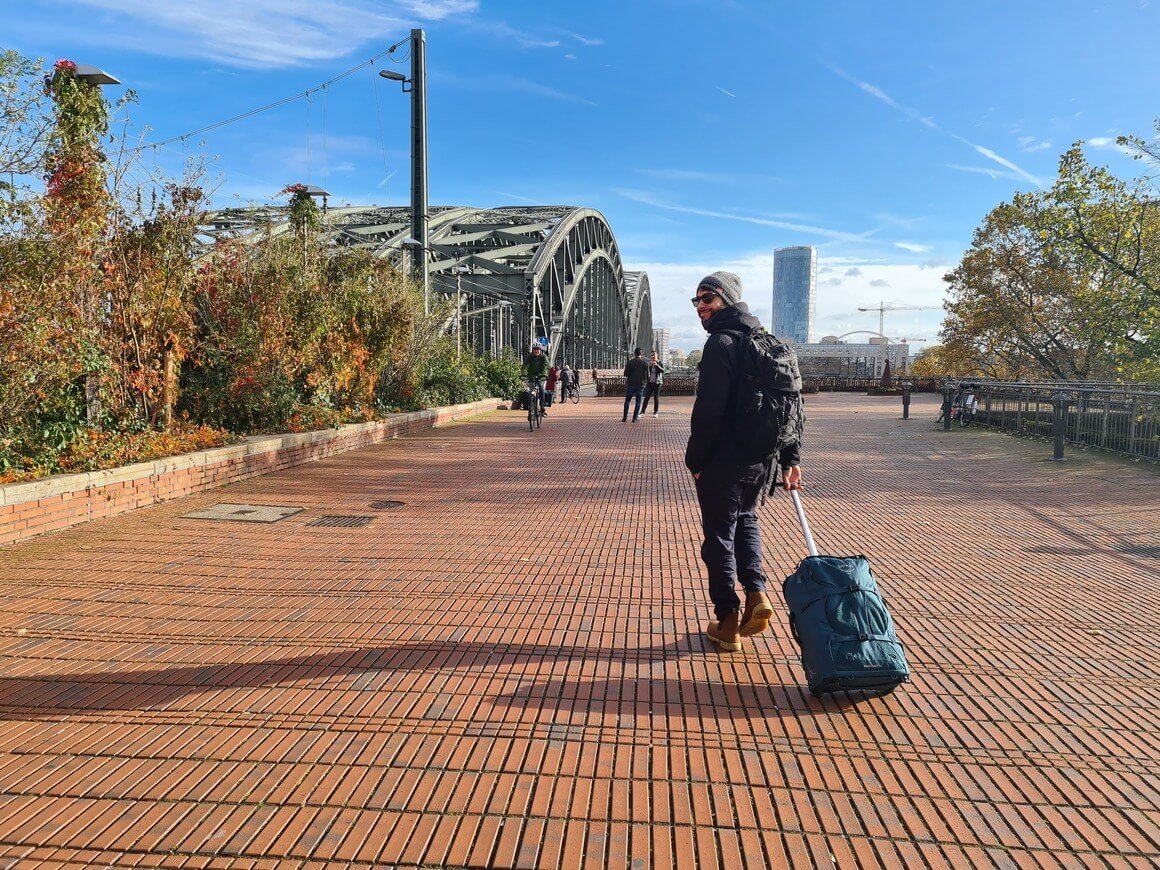
Photo: @Lauramcblonde

And for transparency’s sake, please know that some of the links in our content are affiliate links. That means that if you book your accommodation, buy your gear, or sort your insurance through our link, we earn a small commission (at no extra cost to you). That said, we only link to the gear we trust and never recommend services we don’t believe are up to scratch. Again, thank you!




